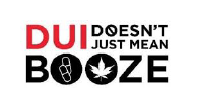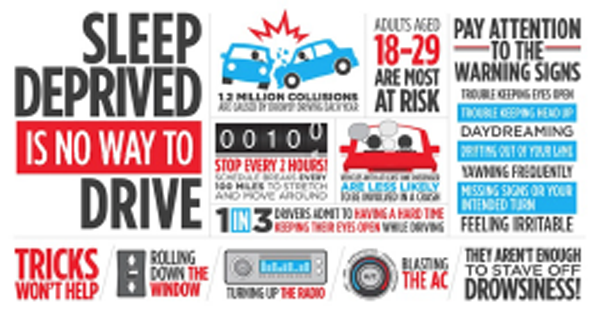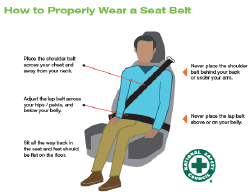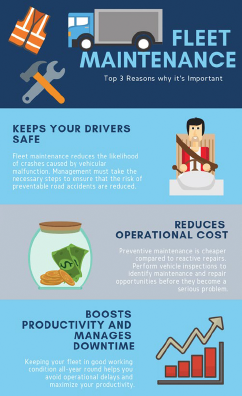Distracted Driving
 What are the risks?
What are the risks?
- Three types of driver distraction are:
- Visual – eyes on road
- Manual – hands on wheel
- Cognitive or Mental – mind on driving
Cell phones are unique from other forms of driver distraction because they usually involve all three forms of distraction. Many people tend to focus on visual and manual distractions. However, mental distraction is very risky because people do not always recognize they are mentally distracted and this distraction lasts much longer than the other two types. While hands-free devices may be marginally safer than handheld, prohibiting driver use of technology is still the safest option.
Drinking, Drugs and Driving
The Scope of the Problem:
Substance use disorders affect 20.8 million Americans, almost 8% of the adult and adolescent population. When you include family members of those affected, nearly one-third of the U.S. population is impacted by addiction. While 75% of these people are part of the workforce, most employers are unaware of the hidden costs associated with these problems. It is estimated that the yearly economic impact is over $442 billion dollars. In addition, the cost of alcohol-related motor-vehicle crashes in 2010 was estimated by the National Highway Traffic Safety Administration at $201.1 billion.

Employer-Provided Help for Alcohol and Drug Problems
In the United States, only one in ten people with a substance use disorder obtains treatment. There is a connection between impaired driving and drivers’ misuse of alcohol and other drugs. So, to reduce the risks of impaired driving, employers should provide the means for employees and dependents who have problems with alcohol and other drugs to seek help.
Driving while drowsy is similar to driving under influence of alcohol:
- Drivers’ reaction times, awareness of hazards and ability to sustain attention all worsen thedrowsier the driver is
- Driving after going more than 20 hours without sleep is the equivalent of driving with a blood-alcohol concentration of 0.08% – the U.S. legal limit
- You are three times more likely to be in a car crash if you are fatigued
- Drowsy driving affects everyone, but especially males under age 25, who make up anestimated 50% or more of drowsy driving crashes.
 Too Tired to Drive?
Too Tired to Drive?
The following are signs and symptoms of drowsy driving, according to the American Academy of Sleep Medicine:
- Frequent yawning or difficulty keeping your eyes open
- “Nodding off” or having trouble keeping your head up
- Inability to remember driving the last few miles
- Missing road signs or turns
- Difficulty maintaining your speed
- Drifting out of your lane
Interventions for Drowsy Driving
- Getting more sleep: According to the American Academy of Sleep Medicine and theSleep Research Society, adults should get seven or more hours of sleep each night
- Medication labels: New labeling guidelines may help drivers understand when todrive or not drive after taking these medications
- Employers: Workplaces with strong off-the-job safety and health programs caninclude key information on getting sufficient sleep and refraining from driving drowsy,switching drivers on long drives or after long work hours.
Wearing your Seat Belts:
 The good news: The vast majority of people wear seat belts. Nearly 90% of people riding in vehicles were wearing seat belts in 2018, according to the National Highway Transportation Safety Administration (NHTSA). NHTSA data show that in 2017, seat belt use in passenger vehicles saved an estimated 14,955 lives.
The good news: The vast majority of people wear seat belts. Nearly 90% of people riding in vehicles were wearing seat belts in 2018, according to the National Highway Transportation Safety Administration (NHTSA). NHTSA data show that in 2017, seat belt use in passenger vehicles saved an estimated 14,955 lives.
The safety benefits of seat belts are clear. Wearing a seat belt is the single most effective way to prevent death and serious injury in a car crash. Drivers and passengers who buckle up are 45% less likely to die and 50% less likely to be moderately injured in a crash (NHTSA).
Who Is Not Wearing Seat Belts?
The one in ten people who are still not buckling up are vulnerable to injuries and death in car crashes. Odds are that some of your employees are among them. The people who are less likely to wear seat belts
need particular attention to help them see the benefits and overcome the barriers to buckling up:
- Younger males
- Commercial truck drivers
- Pickup truck drivers and passengers
- Passengers in the rear seat
- Teens
 Preventive Maintenance Checklist for Fleet
Preventive Maintenance Checklist for Fleet
The following list includes some of the basic things most vehicles require. Be sure to check the recommendations provided by the vehicle manufacturer. Don’t forget to consider your company’s usage of specific vehicles in establishing preventive maintenance plans.
- Change engine oil and filter.
- Check, change or fill transmission fluid.
- Inspect fuel system.
- Check cooling system.
- Inspect engine and transmission mounts.
- Look at drive shaft, CV joints, belts, and hoses.
- Perform regular tune-ups.
- Inspect electrical system and braking components.
- Be sure steering and suspension is in good condition.
- Rotate and inspect tires, wheels and rims.
- Examine exhaust system.
- Check undercarriage, frame, all lights.
- Inspect body, glass, and mirrors.
- Ensure windshield wipers are working and fluid is full.
- Check seat belts, horn, and auxiliary systems.
- Repair fluid leaks.
Defensive Driving Safety Skills
|
Driving Safety Skills |
Description |
Example |
Vehicle Active Safety Systems |
|
Vehicle inspections (outside) |
Inspecting the condition and safety of the vehicle at set intervals or prior to long trips. |
Checking the tires’ pressure after it begins to get warm outside after a cold winter. |
Tire Pressure Monitoring System |
|
Vehicle inspections (inside) |
Ensuring that the vehicle is distraction- free and free of any potential hazards before beginning to drive. |
Ensuring that the vehicle’s air conditioning is operational before proceeding through a drive in the desert. |
Health and Workload Monitoring System |
|
Visibility adjustments |
Adjusting side-view mirrors, head restraint and rearview mirror prior to every driving trip to ensure you have optimal viewing angles of the roadway behind you; ensuring your windshield is clear of debris prior to driving so that you have a clear view of the roadway ahead of you. |
Changing the windshield wipers for snowy weather. |
Advanced Headlamps |
|
Mitigating distractions – inside car |
Mitigating the risk of being distracted while driving. |
Setting up the GPS before beginning a trip. |
Health and Workload Monitoring System; Audible Navigation System |
|
Fatigue and drowsiness |
Ensuring you are rested enough to be able to drive safely. |
Refraining from driving when one begins to feel as thought they may fall asleep. |
Drowsiness and Attention Assist |
|
Speed adjustments |
Decreasing one’s speed when encountering dangerous roadway conditions or other hazards, such as approaching a curve. |
Decreasing one’s speed when entering a busy urban area with numerous pedestrians. |
Adaptive Cruise Control; Curve Speed Warning |
|
Stopping distance |
Allowing oneself sufficient amount of distance to stop depending on the roadway conditions. |
Allowing oneself additional stopping distance on loose gravel or lightly packed snow. |
Forward Collision Warning; Anti-Lock Braking System; Traction Control System; Road Surface Warning |
|
Headlight adjustments |
Ensuring the headlamps are at an appropriate setting to allow you to see the road ahead of you without blinding the drivers of oncoming vehicles. |
Turning off the brights or hi-beam when approaching a vehicles in the opposite lane. |
Advanced Headlamps |
|
Hill – ascending |
Understanding the limitations of you vehicle when going up a hill. |
Being prepared for vehicle to roll back when starting to go up a hill from a stopped position. |
Hill Start Assist |

